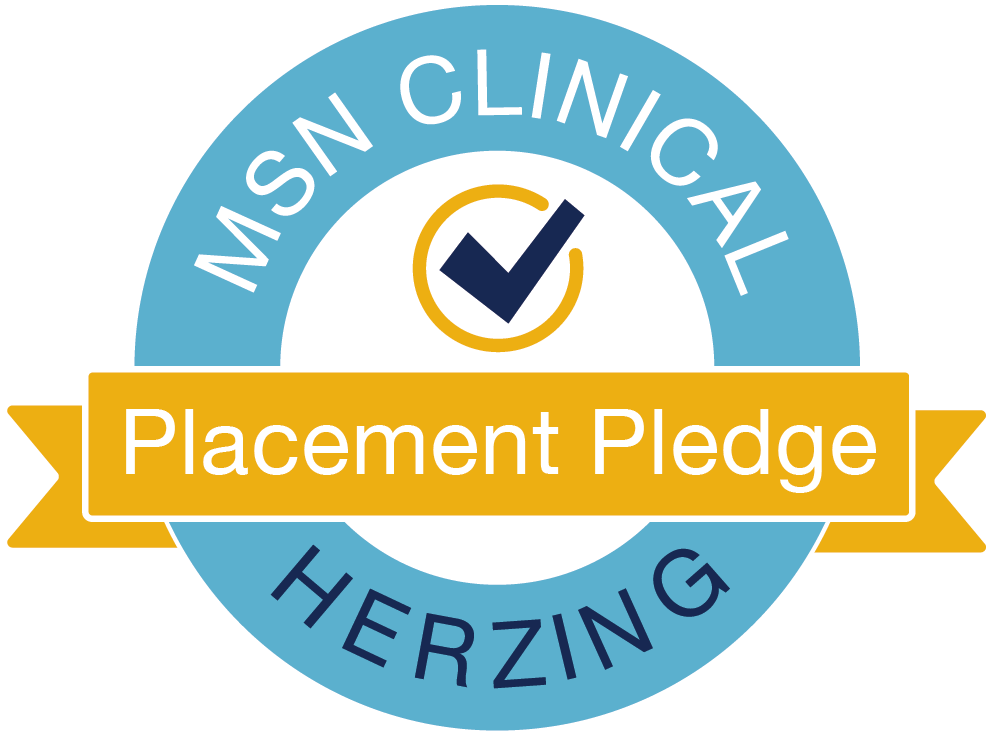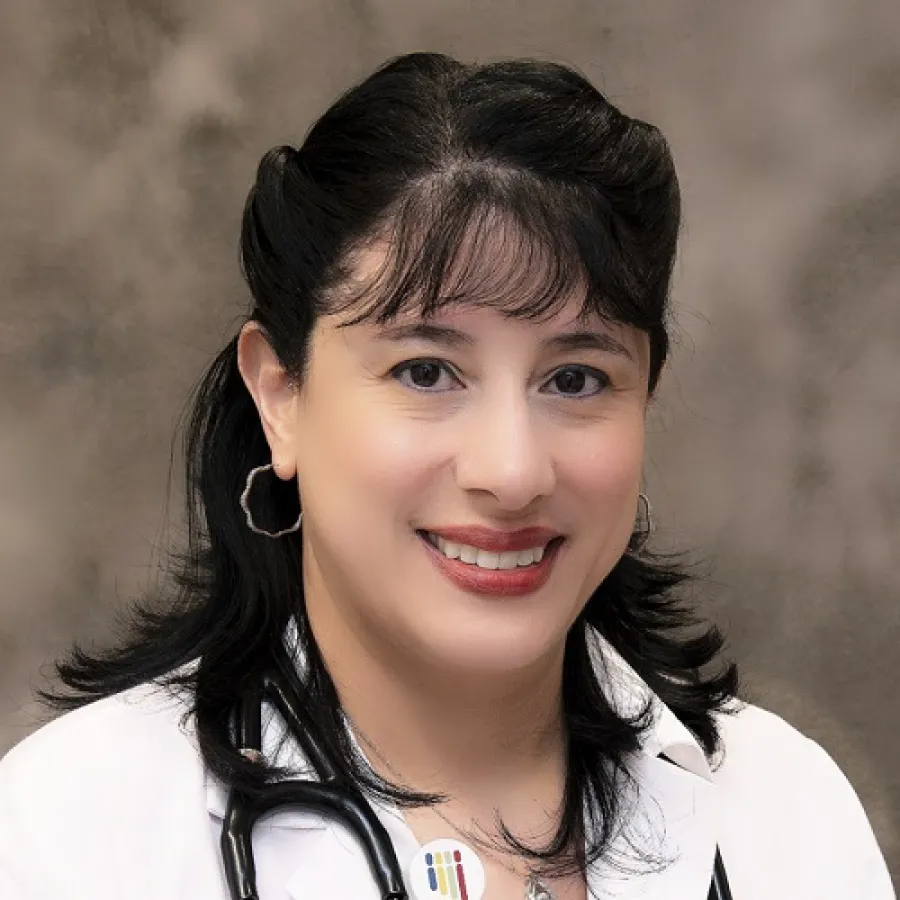Advance your career to Pediatric Nurse Practitioner (PNP)
Herzing University offers unique pathways for current Registered Nurses (RN) to earn a Master of Science in Nursing (MSN) or Doctor of Nursing Practice (DNP) and take the first step towards becoming a PNP.

MSN-PNP
Go from BSN to PNP
- Program length: 24 months
- Classes: View the curriculum
- Admissions: View enrollment requirements

Accelerated MSN-PNP
Go from RN/ADN to PNP
- Program length: 28 months
- Classes: View the curriculum
- Admissions: View enrollment requirements

Post Master's PNP
Go from MSN to PNP
- Program length: 20 months
- Classes: View the curriculum
- Admissions: View enrollment requirements

BSN to DNP-PNP
Go from BSN to DNP-PNP
- Program length: 32 months
- Classes: View the curriculum
- Admissions: View enrollment requirements

MSN to DNP-PNP
Go from MSN to DNP-PNP
- Program length: 24 months
- Classes: View the curriculum
- Admissions: View enrollment requirements
Advance to pediatric NP with Herzing University
| Accreditation | CCNE accredited,1 Accredited by the Higher Learning Commission |
|---|---|
| Pathways | Unique pathways for current RNs who hold an associate degree (RN to MSN), bachelor's degree (BSN to MSN, BSN to DNP), or master's degree (MSN to DNP) |
| Format | 100% online coursework with hands-on clinical practicum experience |
| Clinicals | We pledge your clinical placement; total clinical practicum hours vary by program |
| QuickPaths | Transfer credit, stackable credentials, and adaptive learning technology build a faster pathway to a higher education with Herzing University |
Discover your potential
Get in touch to learn more about our school and how we can help you reach your highest career goals.

Ranked by U.S. News & World Report as one of the best online graduate nursing programs in 2025
Your clinical placement is our pledge.
We understand securing clinical placement as part of a PNP program is one of the biggest concerns students face. At Herzing, we offer guidance and support through our step-by-step Clinical Guidance Process to ensure you can get the clinical practice experiences you need.
As a Herzing student, we’ll encourage you to find your own preceptor and clinical sites as there are many benefits to doing so. However, we provide extensive support should you find difficulty along the way. With Herzing, you are never on your own.
Because of our strong relationships with healthcare providers across the U.S. and our comprehensive Clinical Guidance Process, we are confident in our ability to help you find clinical placement. So much so that if you are unable to find a clinical site on your own, we pledge to step in and help you secure clinical placement.*
* Subject to terms and conditions outlined in the enrollment documents.

Tuition & Cost
Tuition & Cost
Our goal is your career advancement. That’s why we are always working to improve our curriculums and processes to make our nurse practitioner programs as affordable as possible while preparing you best for success in your work.
Overall cost can be reduced through transfer credit from prior college coursework, scholarships and grants, loans, VA and military benefits, and several additional options for financial aid.
With Herzing University, you are never alone, and we offer many options to help you invest in yourself, earn your master’s degree in nursing and become a PNP.
Scholarship Opportunities
We are proud to have awarded $13+ million in scholarships and grants to nursing students in 2024.
An affordable, career-focused education is possible with Herzing University.
Waived Enrollment Fee
Discover the educational pathway designed to maximize your career potential. Reach for greater heights with Herzing University.
I tell all my friends to go to Herzing. I had such great support from the school, but especially from the advisors. Anyone you reach out to is always willing to help.
As a lifelong partner in learning, we work hard to empower every student to succeed.
Read their storyHere to Serve You
Pathways to Success
Many of our online programs offer pathways for continued learning, which allow you to move from one degree, such as an associate degree, to a bachelor’s degree, to a master’s degree.
Flexible and Convenient
Earn your degree from the comfort of your own home. There are no designated times you must be online. You can log into your virtual classroom when it’s convenient for you.
Personalized Attention
At Herzing, being online does not mean being alone.You’ll receive the same personalized attention and career-focused education that we offer in our traditional classroom.
Online and/or On-Campus
Get the best of both worlds. Some of our degree programs are offered exclusively online and some programs are offered as a combination of both campus and online classes.
I don’t have a nursing degree. Where do I start?
There are multiple potential educational pathways in nursing that could be right for you:
- Our on-campus Accelerated BSN program, available at select Herzing campuses, allows you to earn a Bachelor of Science in Nursing (BSN) in as few as 20 months (most students complete in 24 months). Eligible for students who have already earned a non-nursing bachelor’s degree.
- If you have not yet earned an undergraduate degree in any major, you will need to first enroll in a pre-licensure Associate of Science in Nursing (ASN), BSN, or Direct Entry MSN program.
Once you’ve earned an undergraduate nursing degree, you can become eligible to enroll in an MSN, RN to MSN, or BSN to DNP program with a PNP specialization.
Faq
Frequently Asked Questions
Didn't find the answer to your question? Send us an inquiry and we will be happy to answer all your questions!
A pediatric nurse practitioner (PNP) is a specialized Advanced Practice Registered Nurse (APRN) who cares for newborns, infants, toddlers, adolescents, and young adults.
Because their patients range in age from infants to young adults, PNPs work with both the patient and their family to provide the right resources and care, including education and emotional support.
Learn more about the general roles and responsibilities of pediatric nurse practitioners.
The biggest step to becoming a pediatric nurse practitioner is to earn a Master of Science in Nursing (MSN) or Doctor of Nursing Practice (DNP) in a PNP concentration. The basic steps include:
Current RNs can potentially become a pediatric nurse practitioner in 2-3 years.
- Associate degree RNs can complete our Accelerated RN to MSN-PNP program in as few as 28 months
- Bachelor’s degree RNs can earn an MSN-PNP in as few as 24 months, or 2 years. BSN nurses may also elect a BSN to DNP-PNP program, which can be completed in as few as 32 months.
- Master's degree RNs can earn a post master's certificate in as few as 20 months
For those who have yet to become an RN, you’ll need additional time to first earn an associate, bachelor’s, or master's degree in nursing before pursuing an MSN.
Working with kids can be incredibly rewarding—particularly for primary care pediatric NPs who can help their patients have a healthy childhood and grow from infancy, through adolescence, and into adulthood.
Even within pediatrics alone you’ll encounter great patient diversity in the age range from birth to roughly 21 years old. Every day will bring new challenges with young people at different stages of development and health issues for you to solve.
Kids are fun!—and some of the most determined, impressive patients you’ll ever work with.
This will depend largely on the board of nursing stipulations in your state. In some instances, it may be permissible for PNPs to see patients past the 18-21 age range who are typically transitioning from pediatric to adult care.
Advancing to nurse practitioner allows you to expand your skillset and potentially earn greater autonomy in your work. While both types of nurses work with the pediatric patient population, most of the differences relate to the general difference between the RN and NP roles.
A few of the biggest differences between RN and NPs include:
- Nurse practitioners can act as a primary care provider, and can potentially spend more time with patients and build longer-term relationships
- Nurse practitioners can prescribe medications
- Nurse practitioners can diagnose patients and write treatment plans
- Nurse practitioners may enjoy a greater work/life balance, as they may have more control over their working schedule
The primary difference between pediatric nurse practitioners and family nurse practitioners is the patient population. Pediatric NPs focus their care on only pediatric patients, while FNPs provide care across the lifespan, including adults and elderly patients.
If you are also interested in treating older patients—and not only children—you may choose to work towards becoming a family nurse practitioner.
According to the Bureau of Labor Statistics, nurse practitioners across all specialties earn an average salary of $132,000 per year ($63.46 per hour).* Average pay can vary based on many different factors including prior experience, type of medical institution, state of employment, and much more.
While there are many different types of nurses who work with the pediatric patient population, there are two specific types of pediatric nurse practitioners: primary care pediatric NPs (PNP-PC) and acute care pediatric NPs (PNP-AC).
The PNCB Pediatric Nursing Demographic Report, published in December 2022, states there were 20,254 certified CPNP-PC professionals and 4,419 certified CPNP-AC professionals. Most CPNP-PCs work in private practice, while most CPNP-ACs work in inpatient treatment at children’s hospitals.
Accreditation & Disclosures
1. The master’s degree program in nursing, the Doctor of Nursing Practice (DNP), and post-graduate APRN certificate programs at Herzing University Madison are accredited by the Commission on Collegiate Nursing Education (http://www.ccneaccreditation.org). Herzing University is approved to offer programs in an online learning modality through association with the main campus in Madison, Wisconsin.
* BLS pay estimates calculate the median annual wage for various occupations. Per the BLS the median wage for an occupation is: "The wage at which half of the workers in the occupation earned more than that amount, and half earned less. Median wage data are from the BLS Occupational Employment and Wage Statistics survey." Bureau of Labor Statistics (BLS), U.S. Department of Labor, Occupational Outlook Handbook 2024. BLS median wage estimates do not represent entry-level wages and/or salaries. Multiple factors, including prior experience, age, geographic market in which you want to work, and degree level and field, will affect career outcomes, including starting salary and earnings as an experienced employee. Herzing neither represents that its graduates will earn the median salaries calculated by BLS for a particular job nor guarantees that graduation from its program will result in a job, promotion, particular wage or salary, or other career growth.
Recent Blog Posts
Waived Enrollment Fee
Discover the educational pathway designed to maximize your career potential. Reach for greater heights with Herzing University.







